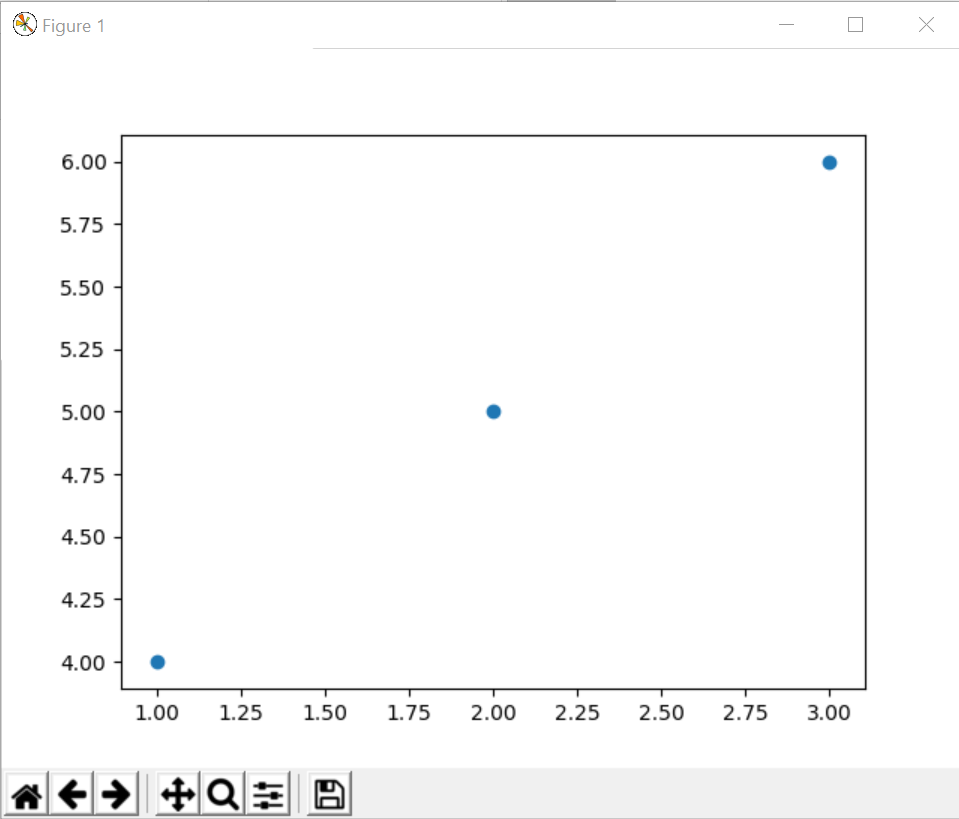

Points_to_plot = np.take(data, positions, axis=0) These points are not connected with a line or represent any bar.

I could reach an acceptable solution using a for loop in the categories and applying some "filtering" as in: for k, v in ems(): A scatter plot contains points that are floating all over the screen.
#PYTHON MATPLOTLIB SCATTER PLOT CODE#
Using the code above the legend displays the list, not each category. The data looks like this: categories = ' for l in labels], label=labels) Is it possible to plot the a scatterplot and display a legend without n different entries on legend box? And a list of categories with size 'k < n' and list of category labels to each data point (of course with same dimension as the data, that is, size n). import matplotlib.pyplot as plt import numpy as np ('mpl-gallery') make the data np.ed(3) x 4 + np.random.normal(0, 2, 24) y 4 + np.random.normal(0, 2, len(x)) size and color: sizes np.random.uniform(15, 80, len(x)) colors np.random.uniform(15, 80, len(x)) plot fig, ax plt.subplots() ax.scatter(x, y, ssize. So, at this point I'm looking for ideas.Given a 2d data with n points in space. But, I can't get either to draw so I have no idea if they'd be faster. import numpy as np import matplotlib.pyplot as plt data np.array ( 1,1, 2,1, 0,1, 3,2, 3,3. Basically, make a set of all of the categories and then pulls and plots the data that meets each category individually. Again, you can style the plot by passing. I wanted to try using CircleCollection or RegularPolygonCollection, as this would allow me to change the sizes easily, and I don't care about changing the marker. Here's a solution that uses only matplotlib (and numpy since that's what you used to define your original dataset). Scatter plots can be created using Axes.scatter(), which will simply place a marker at each x-y pair you pass into it. That would I think look something like this import matplotlib.pyplot as pltĬoll = ax.scatter(X,Y,facecolor=colors, s=S, edgecolor='None', marker='D')
#PYTHON MATPLOTLIB SCATTER PLOT HOW TO#
For that, I can change color and position, but don't know how to change the size of each point. Print '%2.1f FPS'%( (time.time()-sTime)/10 )Īlternatively, I can edit the collection returned by scatter. You can use scatter plots to explore the relationship between two variables. #don't change anything, but redraw the plot A scatter plot is a visual representation of how two variables relate to each other. I think the most elegant way is that suggesyted by. E.g.: import matplotlib.pyplot ( 1,2,3, 4,5,6,color 'red','green','blue') When you have a list of lists and you want them colored per list. import matplotlib.pyplot as plt plt.scatter(x,y, c'b', marker'x', label'1') plt.scatter(x, y, c'r', marker's', label'-1') plt.legend(loc'upper left') plt. The normal way to plot plots with points in different colors in matplotlib is to pass a list of colors as a parameter. #there are easier ways to do static alpha, but this allowsīackground = _from_bbox(ax.bbox)Ĭoll = ax.scatter(X,Y,facecolor=colors, s=S, edgecolor='None',marker='D') Although accepted answer works good but with matplotlib version 2.1.0, it is pretty straight forward to have two scatter plots in one plot without using a reference to Axes. The Matplotlib module has a method for drawing scatter plots, it needs two. import matplotlib.pyplot as pltĬ = np.random.random(10000) #will be color A scatter plot is a diagram where each value in the data set is represented by a dot. I didn't want to alter the fps result with large calls to random). (I realize the plot redraws without updating. There's the obvious way to do thing (the way it's implemented now) So, I'm working on ways to speed up scatter, but I'm not having much luck Small numbers of points are ok, but once the number rises things get frustrating in a hurry.

Right now it works, but changes take too long to render. I'm trying to make an interactive program which primarily uses matplotlib to make scatter plots of rather a lot of points (10k-100k or so).


 0 kommentar(er)
0 kommentar(er)
